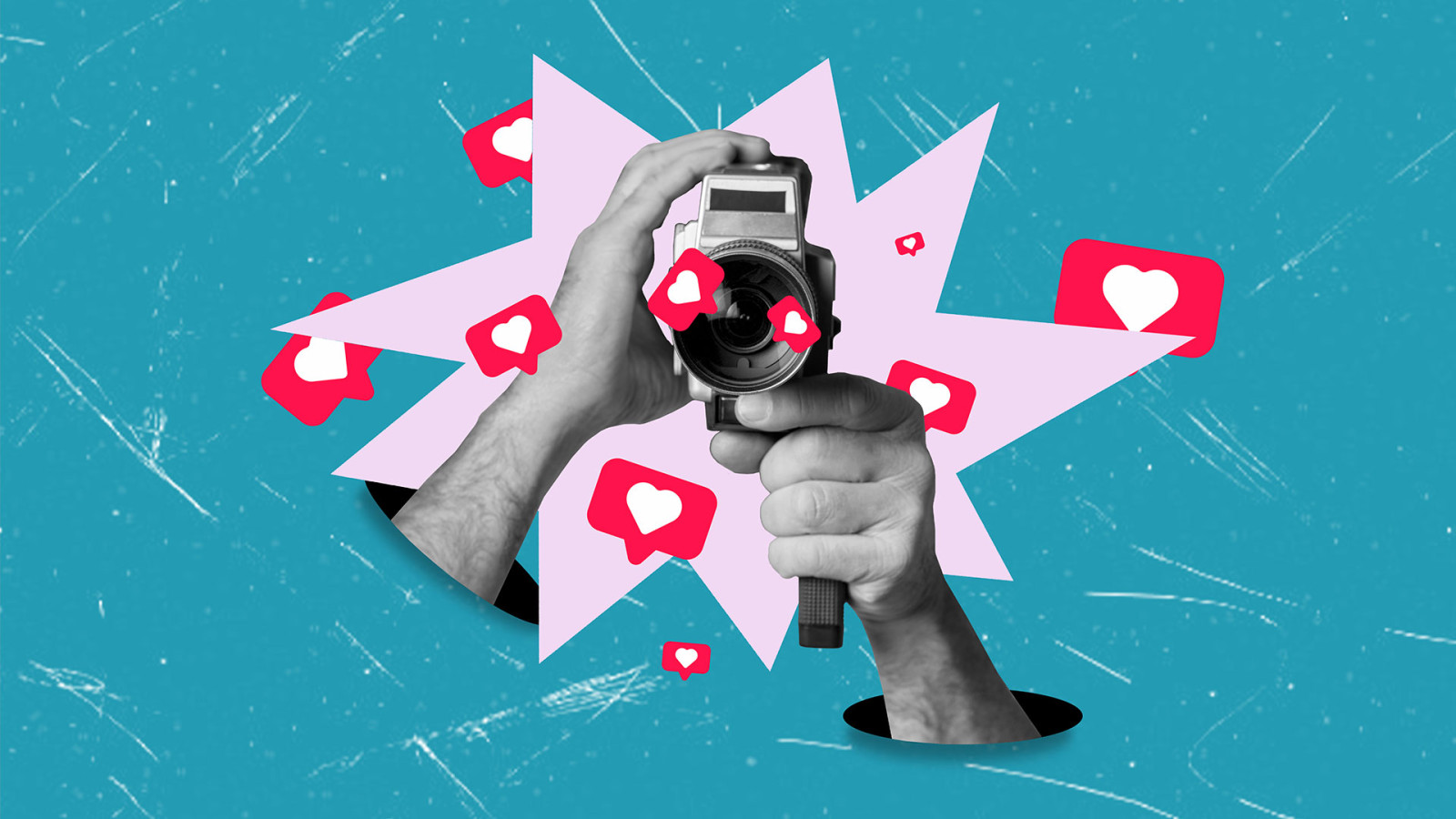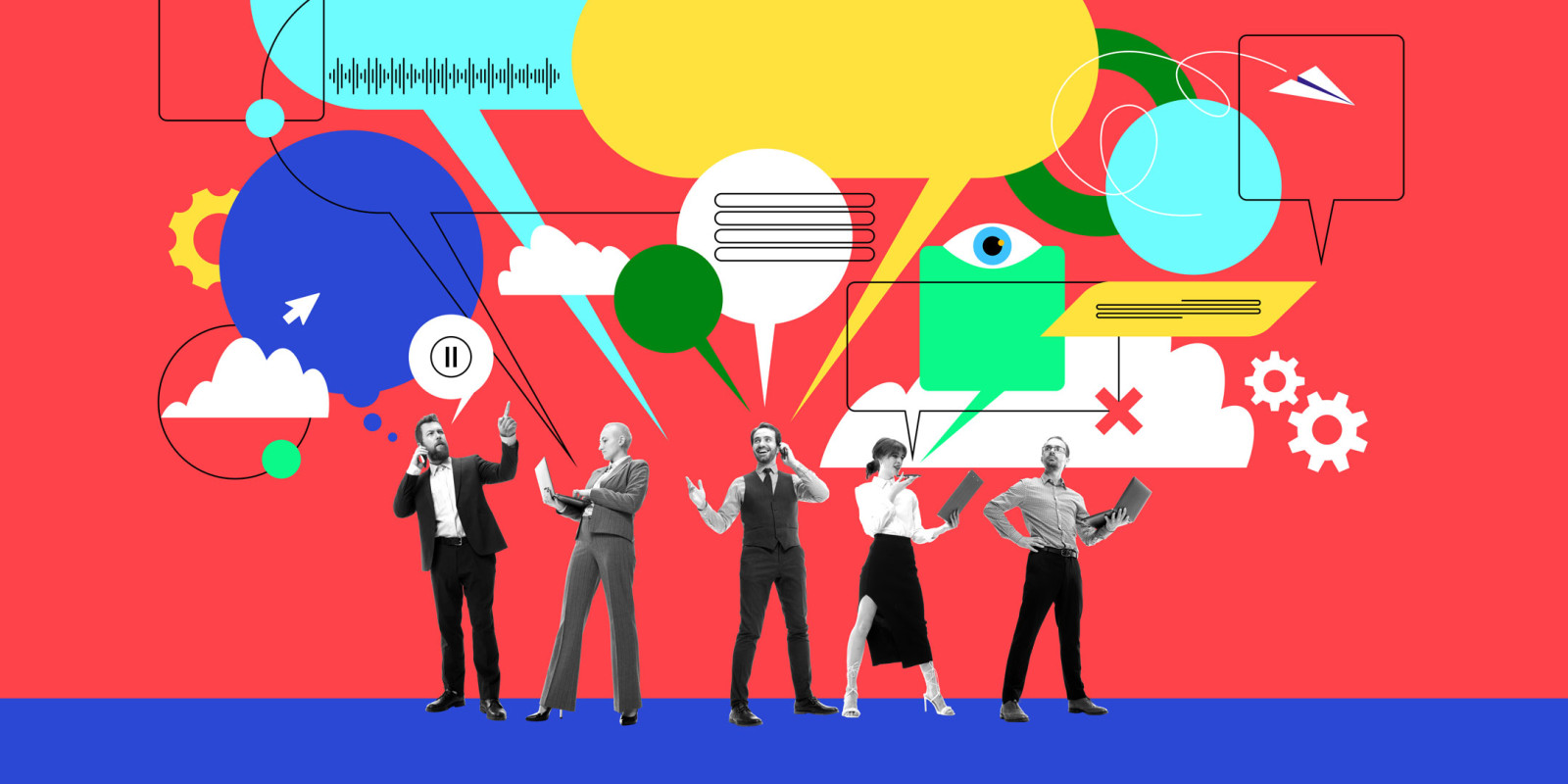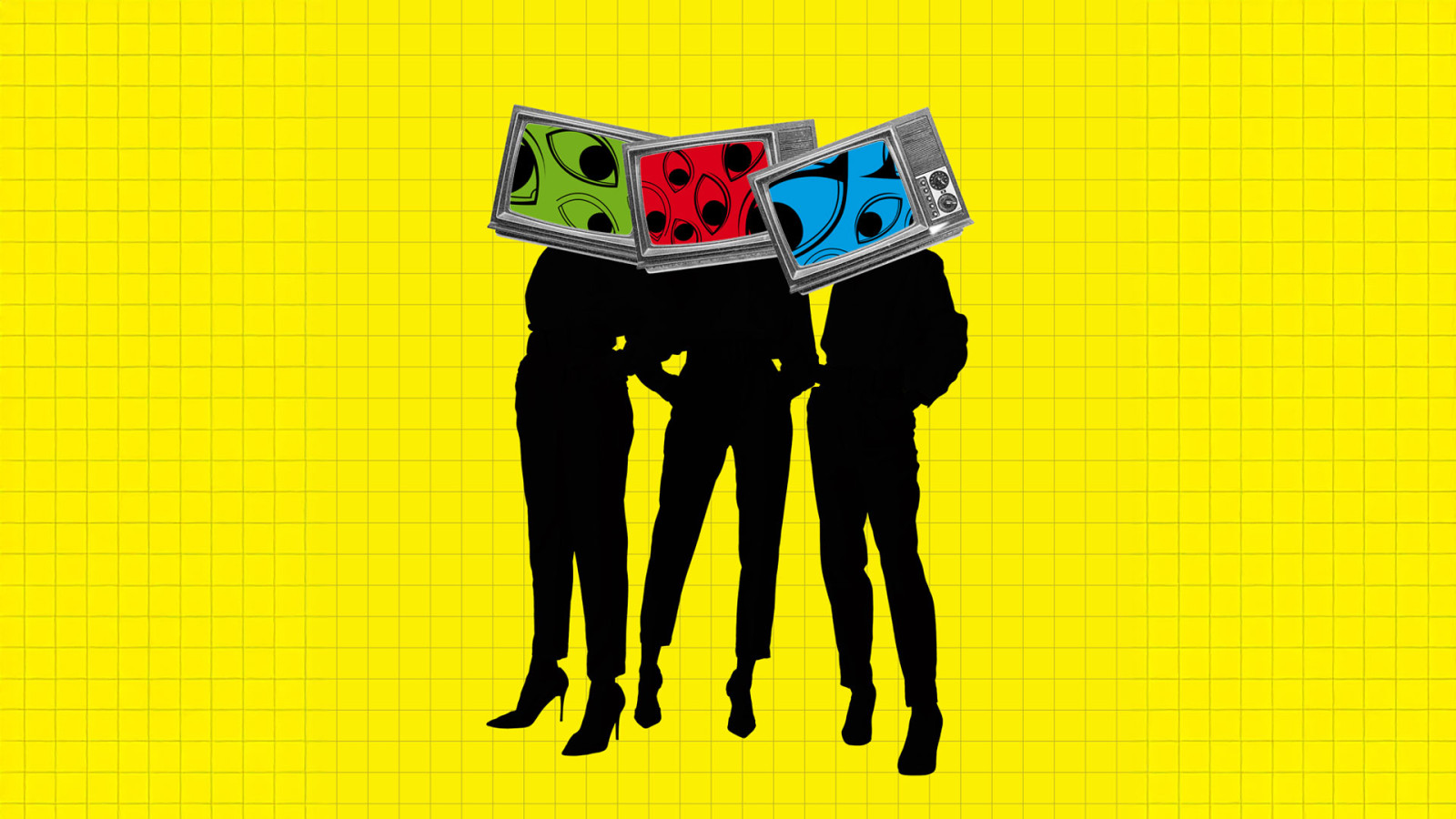How a motion graphics designer creates compelling content
Published Jan 16, 2024 – By Leah Clarkson

Trends in content design come and go, but one evolution that has been consistent across platforms and industries is the move from static to motion-based design. While younger generations might find it difficult to believe, there was a time in the distant past when it was possible to find a website without any graphic design elements at all. These days, not only would it be a struggle to find any digital asset without some graphic element, but it would be almost as difficult to find a website without a motion graphics design component: an animated logo, background or typography, for example, or interactive hover effect.
Today, motion graphics design is a key component of any successful content campaign, and here at Wardour our graphic designers, video editors and the entire creative team are daily innovating our use of motion graphics to maximise audience engagement for our clients – and that means even going beyond motion graphics to step boldly into the future of AI tools for 3D animation.
What is motion graphic design?
It’s a broad category, certainly, but simply put, motion graphics design refers to the use of animated visual elements (usually in media such as videos, websites, presentations, etc.) that create the illusion of motion or bring static images to life; these pieces of animation are often combined with audio use. Typically, motion graphics designers use these animation techniques to manipulate text, images and shapes, providing a much more dynamic and engaging visual experience than static imagery.
Motion graphics is, essentially, a style of animation, one that is especially suited to the illustration of complex ideas through visualisation. Whether aware of it or not, most of us have experienced websites that deploy the full range of use of motion graphics to enhance the user experience. This might be seen in logo animation or branding, which can create a memorable first impression, or subtle animation in a website header to capture attention and convey the site’s theme or purpose. Kinetic typography, or the animation of text where words and letters are brought to life through motion, can greatly enhance the visual impact of textual information. Some types of animation might be triggered by scrolling or appear when a screen is loading, with the goal of entertaining users and reducing user perception of wait times. Even a small shift to motion such as the incorporation of hover effects (the application of motion to elements that respond to user hover actions) can create a more interactive and playful browsing experience.
Motion graphics can also be used to help communicate important messaging and/or to showcase products, for example through the incorporation of subtle animations into the background to add depth, using motion graphics to draw attention to important call-to-action buttons (and thus also encouraging user interaction), or displaying products or features with animated demonstrations, which gives visitors a dynamic view and highlights key functionalities. Storytelling elements, or the integration of motion graphics to create a visual story and guide users through the website narrative, can also create a memorable experience.
Why motion graphics?
First and foremost, motion graphics takes static graphic designs and adds animation and movement that quickly helps clarify an idea or message. The speed with which motion graphics can communicate an idea is crucial to its ever-rising popularity, particularly given the short attention spans of modern-day audiences. We would expect to see motion graphics design used in this way not only on websites, but also in other digital assets such as through specific animation techniques used in explainer videos, for example.
Kristian Coomber, Wardour’s Head of Creative Technologies, says motion graphics are particularly suited to branding because they are so dynamic and engaging, adding a layer of visual interest to a brand’s identity. Indeed, the ability to incorporate movement, transitions and animated elements allows for a more immersive and compelling storytelling experience, one that not only conveys information but evokes emotions – this, in turn, reinforces brand messages.
Motion graphics also provides versatility across various digital platforms, which allows brands to maintain a cohesive visual identity across websites, social media and other digital promotional materials. Ultimately, the dynamic nature of motion graphics allows brands to stand out in a crowded market, ingraining connections more deeply with their audience and amplifying overall brand recognition.
Kristian cites the programmes in the Adobe creative suite (eg Adobe After Effects, Adobe Illustrator, Adobe Photoshop, Adobe InDesign and Adobe Premiere Pro) as the main editing tools for motion graphics designers, and those used most commonly by the animators and video editors on his creative team. “Other approaches that help us create more engaging content are using customised templates, plugins and scripts,” Kristian says, adding “I think websites need to become more engaging if you want them to be a central point for your audience to go to, because platforms like Instagram are becoming so big. A lot of people, if they want to know something about a company, will just go to their social media channel because a lot of the information will be on there, and it has the added benefit of showing credibility”, for example, through comments and followers.
Beyond 2D
At Wardour, Kristian and his team of designers experiment constantly (and flex their graphic design skills) with new technologies and animation software to create compelling content for clients that moves the online experience beyond motion graphics and into the brave new world of 3D AI-assisted animation/3D motion graphics.
Wonder Dynamics is just one of these AI tools; it automatically animates, lights and composes computer generated characters into a live action scene. “What’s so great about what Wonder Dynamics does,” Kristian says, “is that it doesn’t just put a robot on top of a figure, for example, but it actually matches the lighting to the scene and the shadows.” It’s difficult to overstate what a leap this is in terms of capabilities for content creation, removing the need for a professional animator and allowing someone with even limited or no experience to create high-quality animations. What's more, the ability to quickly achieve high-quality character animation presents clients with many more options for visual storytelling, including the creation of bespoke avatars across a suite of assets. Some could even be used in a unique video game setting!
What’s so great about what Wonder Dynamics does is that it doesn’t just put a robot on top of a figure, for example, but it actually matches the lighting to the scene and the shadows.
“Another up-and-coming technology is 3D photo scanning,” Kristian explains, “You can now use your phone to photo scan different objects.” A whole host of 3D scanning apps are now available for phones, and these allow animators or motion graphic designers to use a phone’s camera to collect three-dimensional data of an object’s shape and appearance. The outcome is not a video, but a large number of photos that are used to construct a digital 3D model that can be manipulated in space.
Of course, 3D scanning has numerous benefits for product design and production, but it’s also a valuable tool for companies that may want to show their products or equipment in detail, particularly when those products are complicated or could use a bit more of an ‘explainer’. What’s more, says Kristian: “The item might not be so exciting on its own, but the technology allows you to elevate it by setting against a really cool background, or bringing it out of the studio.”
AI technologies
When thinking about AI technologies it’s important to distinguish between generative AI and AI assisted tools. Generative AI refers to a class of artificial intelligence systems that are designed to generate new content such as images, text or other forms of data. These systems can create content that is not explicitly programmed or provided to them but generated autonomously based on patterns and knowledge learned from existing data. An AI-powered tool, on the other hand, is a software application that uses AI techniques and algorithms to perform specific tasks or functions; these tools leverage machine learning, natural language processing, computer vision and other AI technologies. Think, chatbots or speech recognition programmes.
The integration of AI technologies in content creation has already revolutionised the way we generate and consume information and, as we all know, AI technology is evolving at breakneck speed. Over the coming five years, Kristian expects the most relevant changes will be around Natural Language Processing (NLP) algorithms and “having AI tools as part of your software.” NLP focuses on the interaction between computers and human language, so programmes that once demanded unique learnings or skill sets to be used or to be most efficiently used (for example, a programme like Microsoft Excel) might in the future be able to simply accept verbal commands from a user. For example, imagine a designer simply instructing Excel to create a custom graph or spreadsheet by stating the desired components and parameters.
As AI continues to advance, its role in content creation is likely to expand, offering efficiency, personalisation and as-yet-undiscovered ways to offer solutions to meet the evolving demands of digital communication.
The future of design
Kristian believes that, in the near future, “the website will remain the central point or hub where you put everything” but that “content will start to be dispersed.” He points out that the reason why so much design innovation still happens on websites, even with the rise of popularity in platforms such as Instagram or TikTok (particularly for Generation V, sometimes referred to as ‘the visual generation’) is because developers create in code, and so the content is much more bespoke and “then there are all these other crazy things you can make. While this is possible, to an extent, on Instagram or LinkedIn, you have to do it within the format of an image or a video or PDF, or something like that, and you’re going to lose that interactivity.”
The solution, in terms of maximising the impact of content across the life of a campaign, would be to create what Kristian refers to as a “peak component” that is then shattered across the different platforms. Ideally, no piece of content lives on its own, “they need to be interconnected and all linking through to each other so that it’s easy for the user to take the journey, to find out more.”
Ahead of the curve
The integration of motion graphics in web design has evolved into a transformative tool that continues to reshape the digital landscape, breathing life into websites and enhancing brand identity and messaging. Here at Wardour, the graphic designers on our creative technologies team seek out ways daily to enhance the dynamic synergy between storytelling elements and product showcases to create immersive narratives that resonate with users.
As content design continues to evolve, not just for web but across the landscape of digital platforms, we’re continuously evolving our strategy around the thoughtful application of motion graphics and the use of emergent AI technologies. This empowers our clients to stand out in a crowded online environment with ’10-minutes (or more!) ahead of the curve’ content (and stunning visual effects) that will leave a lasting impression on their target audience.
To learn more about Wardour’s work with motion graphics design and 3D AI design tools, email us at hello@wardour.co.uk
Related insights articles
Stay ahead of the curve
Sign up to our emails

